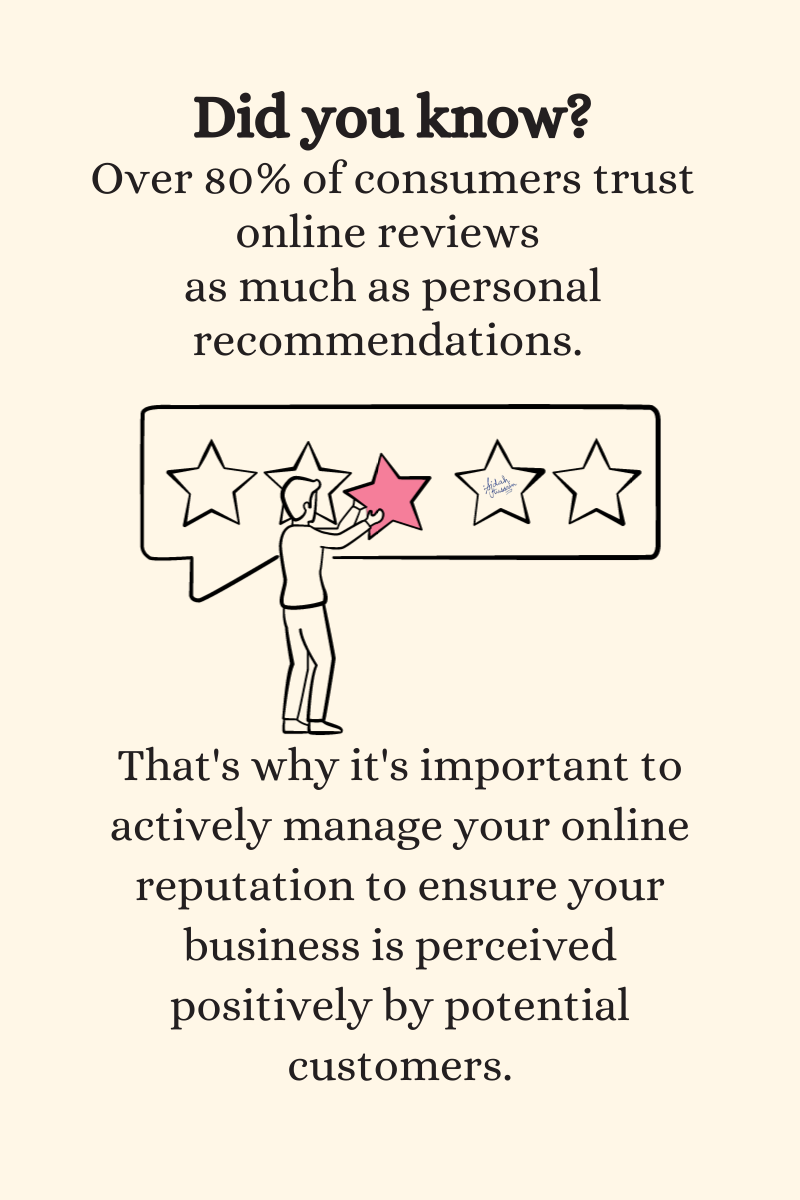Politics
ORM and SEO: Improve Rankings After a Reputation Crisis
Published
1 year agoon
By
Drew Simpson
Reputation is everything. In today’s digital world, your online reputation is just as important as your offline reputation. Online Reputation Management (ORM) is a big deal nowadays. As a business owner, you know that a negative online presence can cause major problems for your brand. If you’re experiencing a reputation crisis, it can be a stressful and overwhelming situation to deal with. But don’t worry — there is a way to get through it. Have you heard of SEO for reputation crisis?
ORM and SEO: How to Improve Your Search Engine Rankings After a Reputation Crisis
Dealing with a PR crisis isn’t easy — unless you proceed with the right approach. You can repair your tarnished reputation and regain control of your digital presence by using SEO for reputation crises. With some management, you can turn the tide in your favor.
I aim to give you ten actionable tips to improve your online reputation after a crisis. From creating a webpage to address the situation and responding constructively to negative reviews, there are ways to monitor your brand’s online reputation. You’ll utilize positive reviews and testimonials, and these tips will help you create a strong online presence and improve your SEO.
By taking proactive steps to enhance your brand’s reputation, you can increase your search engine rankings, boost your business, and prevent future reputation problems.
Let’s look at how these two can work together to help improve your search engine rankings after a reputation crisis. Let’s discuss how ORM and SEO can impact your business.
Ten Tips for Using SEO for Reputation Crisis
Step 1 – Create a Webpage to Address the Crisis
A web page that communicates your actions to correct the situation is essential for gaining public trust. To ensure that customers can easily find and access your site, SEO techniques — such as keyword targeting and strategic linking, helps customers find this page.
Step 2 – Utilize Positive Content Marketing Tactics
Leveraging the power of blogging and press releases is a great way to enhance your company’s reputation. Publishing new, relevant content on your website — from blog articles and news updates to executive statements and analysis pieces — allows you to produce more positive search engine results that can provide a balance for any negative content about your company online.
A proactive approach will help to reduce the prevalence of damaging articles and build brand recognition in your industry, ultimately bolstering the public perception of who you are as a business.
Best of all, with regular maintenance and upkeep of your original content, you can achieve sustained visibility over time in an impactful and cost-effective manner.
Step 3 – Respond Constructively to Negative Reviews
Responding constructively to any negative reviews or comments you come across is a great way to show your followers that their opinion matters. This lets them know that their feedback is not being taken lightly and that their voice has been heard.
In essence, showing respect to negative reviews can work in your favor, as followers will appreciate your effort in tackling their issues despite having an unfavorable opinion of your product/service.
If necessary, don’t be afraid to apologize, and make sure to thank them for providing constructive criticism. This shows appreciation to the person giving feedback and provides you with valuable insight into the techniques that worked.
Step 4 – Incorporate Social Media into the ORM strategy
To stay competitive in the digital world, it is essential to incorporate social media into your online reputation management strategy. Not only should you be monitoring what users say on social platforms, but you should also be engaging with customers and responding promptly to any complaints or concerns they may have voiced. This will help you maintain a positive online profile and build trust with your online community.
Step 5 – Devise a Crisis Communication Plan
Developing a crisis communications plan is essential for any business that values its reputation. Every organization should have an actionable plan which explains how they will respond to negative publicity.
Crafting a comprehensive plan ahead of time can keep the organization calm, composed, and organized during a public relations crisis and ensure that accurate information reaches the right audiences in a timely fashion. A staff member should also be designated as an official spokesperson to provide statements on behalf of all stakeholders involved.
Step 6 – Analyze Your Brand’s Online Reputation
It is important to stay on top of your online presence by monitoring what people say about your brand. This can help you identify any potential issues and keep track of the positive aspects of your reputation.
You can use a variety of tools, such as Google Alerts, Hootsuite, or Social Mention, to track what people are saying about your brand online. This will allow you to stay informed and respond quickly and effectively when needed.
In addition, you should also make an effort to constantly monitor your accounts for any suspicious activity or fraudulent reviews that could damage your reputation. If you find anything, it’s important to take action quickly and address the issue before it gets out of hand.
Step 7 – Reach Out to Influencers
Engaging with influencers is a great way to increase your brand’s visibility and reach more potential customers. By reaching out to influencers with a large following, you can leverage their influence and credibility to build trust in your brand.
Reaching out to influencers doesn’t have to be complicated or time-consuming. You can start by connecting with them on social media, emailing them to introduce your brand or its products, and inviting them to collaborate with you. Collaboration could include hosting giveaways, creating content together, or offering discounts and special offers.
These efforts will help you increase your online presence, create positive word of mouth, and boost your online reputation. Connecting with the right influencers can reach a larger audience and keep your brand’s image positive.
Step 8 – Utilize Positive Testimonials and Reviews
Positive customer reviews are among the best ways to build trust with potential customers and improve your online reputation. Encourage your customers to leave reviews on platforms like Google, Yelp, and Facebook. You should also take the time to respond to any negative reviews or feedback professionally and courteously.
Testimonials are another great way to boost your online reputation and encourage potential customers to purchase from you. Reach out to satisfied customers who have used your products or services and ask them to write a testimonial. This can be done through email, social media, or even in person. You can then use these reviews and testimonials on your website and other platforms to show potential customers why they should choose you over the competition.
Step 9 – Manage Your Online Presence
It’s important to create a plan to manage your online presence and stay on top of what people say about your brand. You can set up daily or weekly checks to review all the platforms where your brand is mentioned, such as social media and review sites. Managing your online presence will help you stay on top of any negative comments and address them quickly.
You should also consider setting up alerts or notifications for when your brand is mentioned anywhere online. This way, you can respond to feedback quickly and answer questions or address concerns before they become an issue. When you manage your online reputation and respond to alerts and notifications, it will help you build trust with customers and give them a positive experience with your brand.
You will want to stay on top of negative comments, maintain control over your brand’s perception, and protect your SEO from a Reputation Crisis. By focusing on creating content that adds value, engaging with existing customers, and utilizing positive reviews and testimonials, you can create a strong online presence and improve your SEO for the Reputation Crisis. With the right strategies in place, you can quickly turn around any negative reviews and take control of your online reputation.
Step 10 – Monitor Progress
The last step in improving your online reputation is monitoring progress. It’s important to track any changes over time. And measure how effective your strategies are at improving your search engine rankings.
You can use the following metrics to gauge the success of your efforts.
- website traffic
- customer reviews
- social media engagement
- brand mentions
Pay close attention to these metrics. Making adjustments where necessary. Metrics will help you can maximize your SEO for Reputation Crisis and ensure that your online reputation is as strong as possible. With the right strategies in place, you can quickly turn around any negative reviews. Meaning — you take control of your online reputation.
You can create a strong online presence and improve your SEO for the Reputation Crisis by:
- focusing on creating content that adds value
- engaging with existing customers
- utilizing positive reviews and testimonials
With the right strategies in place, combined with regular monitoring of progress, you can protect your online reputation and maximize your SEO for Reputation Crisis.
Wrapping Up
Reputation management is crucial for businesses. It’s important to have a plan in place if you experience a crisis. ORM isn’t just about putting out fires. By taking proactive steps to improve your online presence, you can increase your search engine rankings and prevent future reputation problems. Following the tips I’ve outlined above, you can improve your online reputation today and protect your business from future damage.
Featured Image Credit: Provided by the Author; Thank you!
Sijdah Hussain
Digital Marketer
Sijdah is an Organic Growth Marketer with 7+ years of experience in the content industry from writing to advising and 5+ years of experience in SEO – she have extensive experience working in a fast-paced work culture in both b2b and b2c industries.
She enjoys designing and implementing content strategies with a consistent brand voice for social media, website and webpage layouts per SEO algorithms to ensure steady growth and online presence & help improve the company’s sales efforts.
You may like
-


How does ERP Helps to improve Business Operations?
-


Digital PR: Building an Online Reputation and Boosting Visibility
-


The Intersection of SEO and IoT: The Role of SEO in Promoting IoT Devices
-
Don’t Wait for the Latest Gadget to Improve Your Mental Health
-


SEO in the Age of Digital Marketing: Secrets to Online Success
-


How Does Technology Improve Workplace Safety?
Politics
Fintech Kennek raises $12.5M seed round to digitize lending
Published
6 months agoon
10/11/2023By
Drew Simpson
London-based fintech startup Kennek has raised $12.5 million in seed funding to expand its lending operating system.
According to an Oct. 10 tech.eu report, the round was led by HV Capital and included participation from Dutch Founders Fund, AlbionVC, FFVC, Plug & Play Ventures, and Syndicate One. Kennek offers software-as-a-service tools to help non-bank lenders streamline their operations using open banking, open finance, and payments.
The platform aims to automate time-consuming manual tasks and consolidate fragmented data to simplify lending. Xavier De Pauw, founder of Kennek said:
“Until kennek, lenders had to devote countless hours to menial operational tasks and deal with jumbled and hard-coded data – which makes every other part of lending a headache. As former lenders ourselves, we lived and breathed these frustrations, and built kennek to make them a thing of the past.”
The company said the latest funding round was oversubscribed and closed quickly despite the challenging fundraising environment. The new capital will be used to expand Kennek’s engineering team and strengthen its market position in the UK while exploring expansion into other European markets. Barbod Namini, Partner at lead investor HV Capital, commented on the investment:
“Kennek has developed an ambitious and genuinely unique proposition which we think can be the foundation of the entire alternative lending space. […] It is a complicated market and a solution that brings together all information and stakeholders onto a single platform is highly compelling for both lenders & the ecosystem as a whole.”
The fintech lending space has grown rapidly in recent years, but many lenders still rely on legacy systems and manual processes that limit efficiency and scalability. Kennek aims to leverage open banking and data integration to provide lenders with a more streamlined, automated lending experience.
The seed funding will allow the London-based startup to continue developing its platform and expanding its team to meet demand from non-bank lenders looking to digitize operations. Kennek’s focus on the UK and Europe also comes amid rising adoption of open banking and open finance in the regions.
Featured Image Credit: Photo from Kennek.io; Thank you!
Radek Zielinski
Radek Zielinski is an experienced technology and financial journalist with a passion for cybersecurity and futurology.
Politics
Fortune 500’s race for generative AI breakthroughs
Published
6 months agoon
10/11/2023By
Drew Simpson
As excitement around generative AI grows, Fortune 500 companies, including Goldman Sachs, are carefully examining the possible applications of this technology. A recent survey of U.S. executives indicated that 60% believe generative AI will substantially impact their businesses in the long term. However, they anticipate a one to two-year timeframe before implementing their initial solutions. This optimism stems from the potential of generative AI to revolutionize various aspects of businesses, from enhancing customer experiences to optimizing internal processes. In the short term, companies will likely focus on pilot projects and experimentation, gradually integrating generative AI into their operations as they witness its positive influence on efficiency and profitability.
Goldman Sachs’ Cautious Approach to Implementing Generative AI
In a recent interview, Goldman Sachs CIO Marco Argenti revealed that the firm has not yet implemented any generative AI use cases. Instead, the company focuses on experimentation and setting high standards before adopting the technology. Argenti recognized the desire for outcomes in areas like developer and operational efficiency but emphasized ensuring precision before putting experimental AI use cases into production.
According to Argenti, striking the right balance between driving innovation and maintaining accuracy is crucial for successfully integrating generative AI within the firm. Goldman Sachs intends to continue exploring this emerging technology’s potential benefits and applications while diligently assessing risks to ensure it meets the company’s stringent quality standards.
One possible application for Goldman Sachs is in software development, where the company has observed a 20-40% productivity increase during its trials. The goal is for 1,000 developers to utilize generative AI tools by year’s end. However, Argenti emphasized that a well-defined expectation of return on investment is necessary before fully integrating generative AI into production.
To achieve this, the company plans to implement a systematic and strategic approach to adopting generative AI, ensuring that it complements and enhances the skills of its developers. Additionally, Goldman Sachs intends to evaluate the long-term impact of generative AI on their software development processes and the overall quality of the applications being developed.
Goldman Sachs’ approach to AI implementation goes beyond merely executing models. The firm has created a platform encompassing technical, legal, and compliance assessments to filter out improper content and keep track of all interactions. This comprehensive system ensures seamless integration of artificial intelligence in operations while adhering to regulatory standards and maintaining client confidentiality. Moreover, the platform continuously improves and adapts its algorithms, allowing Goldman Sachs to stay at the forefront of technology and offer its clients the most efficient and secure services.
Featured Image Credit: Photo by Google DeepMind; Pexels; Thank you!
Deanna Ritchie
Managing Editor at ReadWrite
Deanna is the Managing Editor at ReadWrite. Previously she worked as the Editor in Chief for Startup Grind and has over 20+ years of experience in content management and content development.
Politics
UK seizes web3 opportunity simplifying crypto regulations
Published
6 months agoon
10/10/2023By
Drew Simpson
As Web3 companies increasingly consider leaving the United States due to regulatory ambiguity, the United Kingdom must simplify its cryptocurrency regulations to attract these businesses. The conservative think tank Policy Exchange recently released a report detailing ten suggestions for improving Web3 regulation in the country. Among the recommendations are reducing liability for token holders in decentralized autonomous organizations (DAOs) and encouraging the Financial Conduct Authority (FCA) to adopt alternative Know Your Customer (KYC) methodologies, such as digital identities and blockchain analytics tools. These suggestions aim to position the UK as a hub for Web3 innovation and attract blockchain-based businesses looking for a more conducive regulatory environment.
Streamlining Cryptocurrency Regulations for Innovation
To make it easier for emerging Web3 companies to navigate existing legal frameworks and contribute to the UK’s digital economy growth, the government must streamline cryptocurrency regulations and adopt forward-looking approaches. By making the regulatory landscape clear and straightforward, the UK can create an environment that fosters innovation, growth, and competitiveness in the global fintech industry.
The Policy Exchange report also recommends not weakening self-hosted wallets or treating proof-of-stake (PoS) services as financial services. This approach aims to protect the fundamental principles of decentralization and user autonomy while strongly emphasizing security and regulatory compliance. By doing so, the UK can nurture an environment that encourages innovation and the continued growth of blockchain technology.
Despite recent strict measures by UK authorities, such as His Majesty’s Treasury and the FCA, toward the digital assets sector, the proposed changes in the Policy Exchange report strive to make the UK a more attractive location for Web3 enterprises. By adopting these suggestions, the UK can demonstrate its commitment to fostering innovation in the rapidly evolving blockchain and cryptocurrency industries while ensuring a robust and transparent regulatory environment.
The ongoing uncertainty surrounding cryptocurrency regulations in various countries has prompted Web3 companies to explore alternative jurisdictions with more precise legal frameworks. As the United States grapples with regulatory ambiguity, the United Kingdom can position itself as a hub for Web3 innovation by simplifying and streamlining its cryptocurrency regulations.
Featured Image Credit: Photo by Jonathan Borba; Pexels; Thank you!
Deanna Ritchie
Managing Editor at ReadWrite
Deanna is the Managing Editor at ReadWrite. Previously she worked as the Editor in Chief for Startup Grind and has over 20+ years of experience in content management and content development.
